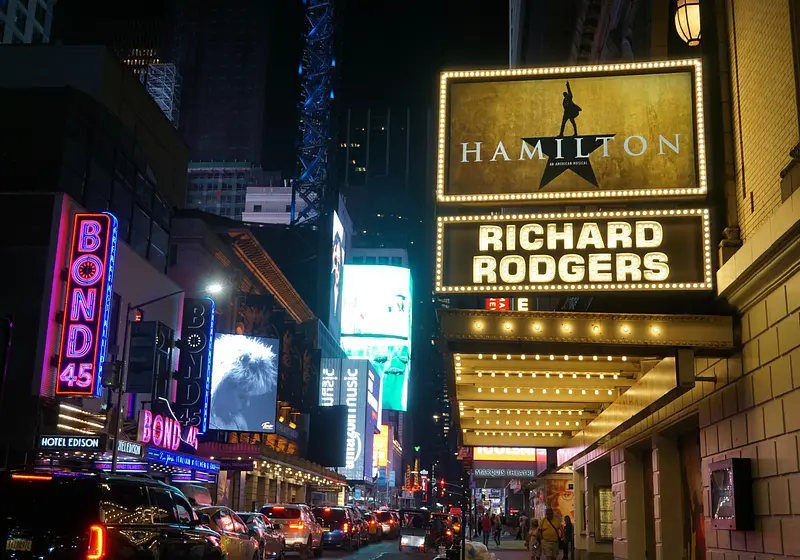Colorblind casting has lately become a point of hot controversy in the film industry. It is the act of casting for a role with no regard for race or ethnic background; in other words, it would demonstrate when POC are chosen to play a part instead of the traditionally cast white actor. This idea has become a major point of controversy, especially as the film industry tries to make strides toward more diversity and better representation.
But does this indeed tackle systemic racism, or is it merely a cosmetic dressing to a much larger issue?

Image credits: cottonbro studio from Pexels
Let us slide into your dms 🥰
Get notified of top trending articles like this one every week! (we won't spam you)
Take the Quiz: Which Literary Fiction Should You Read Next?
Jump into the world of literary fiction with the one of these novels based on your existing favourites.
The Good Side of Colorblind Casting
One of the main arguments in favor of colorblind casting is its ability to provide much-needed representation for POC. White actors have held major Hollywood screen roles for decades.
Zipping their eyes off the nondiversity issue, marginalized POC audiences frequently felt unnoticed and left out of stories that formed popular culture. Colorblind casting brings in actors of varied races, which essentially turns that into a voice that resonates with these audiences and fosters a connection with roles from which they would have otherwise historically been excluded.
Movies like Hamilton saw people of color in the roles of historical figures Alexander Hamilton and George Washington. The POC-all cast has not only helped to perish stereotypes but also broadened how American history is experienced through a more inclusive lens. And it’s not just musicals—superhero movies like Black Panther have shown how representation can bring empowerment to entire communities, where the cast is made up of mostly Black actors. These examples show how colorblind casting can break boundaries and offer opportunities for POC in major roles.

Lin-Manuel Miranda in Hamilton, Image credits: Steve Jurvetson from Wikimedia Commons
But Is That Enough?
Some say that even if POC representation is a significant progress toward equalization, it does not represent the correction of the profound aspects of racial discrepancies in the filmmaking industry.
So why not pen new stories around the lives of people of color rather than just modifying current ones to better fit a greater diversity of cast? POC deserve better than token inclusion; they deserve to see themselves in starring roles.
Here is proof of color-blind casting:
Halle Bailey as Ariel in The Little Mermaid embodies a moment of triumph for many. Yet, the story of Ariel is still based on a Danish fairy tale written hundreds of years ago. While it’s amazing to see a Black woman in this role, it still begs the question: Why aren’t there more stories made from scratch with Black characters instead of changing the race of characters that were always white? This appears to be a backdoor way of rectifying things that color-blind casting achieves.

Halle Bailey, Image credits: Sister Circle TV from Wikimedia Commons
The industry makes its own statement with it by casting POCs in roles that were originally specified for white characters, but it continued catering to narratives created by and for a historically white audience. What's worse is colorblind casting doesn't always extend to behind the camera positions, like directors, producers, or writers who are still grossly white. Representation on the screen matters, but so does that of the person telling the stories in the first place.
Where Colorblind Casting Falls Short
The cultural background of the character is not factored in much in cases of colorblind casting. There are roles that can be and also roles that cannot be race-neutral. In particular, for instance, the casting of a white actor for a character whose culture and history are deeply embedded within a particular POC group will draw ire because it is insensitive or worse, offensive. Most of the time, this eradicates the authenticity and richness of the culture that is being portrayed.
Now, let's talk about the whitewashing row, where, in many cases, roles once populated by Asian or Latino characters are simply handed over to white actors anyway. The outcry surrounding films such as Ghost in the Shell and Aloha clearly brought forth the idea that it's about something greater than just putting an actor in a role: it's about the story and the background of the character. Colorblind casting can sometimes unintentionally feed harmful stereotypes or create the illusion that some cultures are less valuable than others if filmmakers aren't careful.
So, What's the Answer?
Instead of leaning solely on colorblind casting, the solution may lie in a more nuanced approach: creating new, original stories with diverse characters. Hollywood has the ability to influence culture, and with it comes the responsibility for the stories it tells to include a wide range of human experiences. It’s not merely about putting POC actors into existing roles; it’s about creating new narratives that reflect their lives, struggles, and joys.
Moreover, the emphasis on equal opportunities addressed toward those behind the camera is also of importance for the industry. Such representation of faces acting in front of the camera is important, but must also be up where stories are shaped. Until then, all voices raised in every step of the filmmaking process will be when real changes start to hit the way race and ethnicity are perceived on camera.

Image credits: cottonbro studio from Pexels
So, is colorblind casting truly anti-racist? Yes? No? The answer isn’t clear-cut.
Colorblind casting allows for more representation of POC actors; however, it does not do a whole lot in getting rid of the systemic issues that continue to limit diversity and representation in the industry. It’s a step in the right direction, but it’s not the ultimate solution.
The key lies in creating new stories, amplifying diverse voices behind the scenes, and ensuring that POC characters are no longer just inserted into pre-existing narratives but are given the opportunity to shape their own stories in a way that feels authentic and meaningful. Only then can we begin to achieve true representation, one that's not just colorblind but full of color, culture, and depth.












